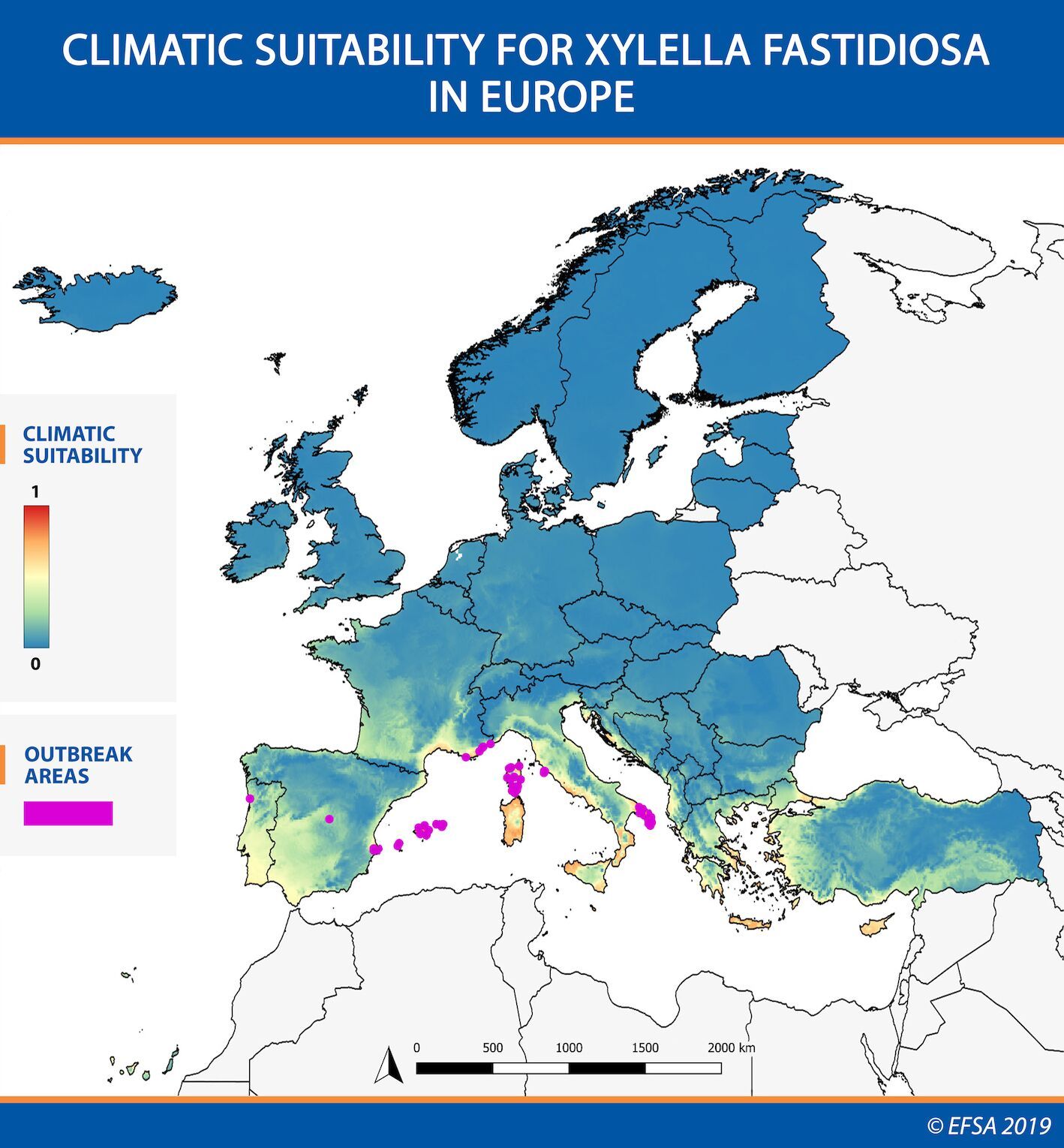Southern Europe still has the highest risk of Xylella fastidiosa, but a certain subspecies is more likely to settle in Northern Europe than other subspecies.
The plant health panel of the European Food Safety Authority (EFSA) has used computer models to simulate the spread of Xylella: over short and long distances and under different climate types.
Due to the warmer climate, areas in Southern Europe generally have the greatest chance of establishing and spreading Xylella. However, the computer models also show some variation in the four most common subspecies of Xylella fastidiosa: fastidiosa, pauca, multiplex and sandyi.

For example, multiplex is more likely to settle in northern areas than the other subspecies. Multiplex has been found on the French island of Corsica and last autumn also on the Tuscan peninsula of Monte Argentario, about 200 km west of the Pistoia nursery region. The Xylella problem in southern Italian olive trees concerns the subspecies pauca.
According to EFSA, there is still no effective cure against Xylella. Certain chemical and biological control measures appear to decrease the disease development in some cases temporarily, but there is no evidence yet that these measures can eliminate the bacterium in field conditions over a long periode of time.









